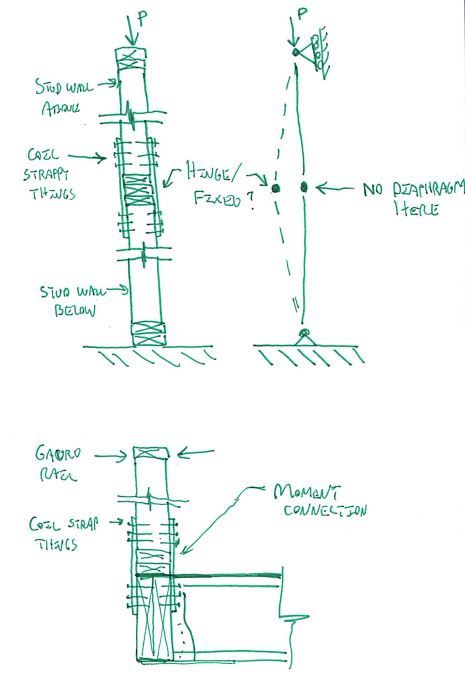I'd like to query the gang here regarding whether or not you would consider the connections shown below to be valid moment connections. There are some engineers working withing my sphere of influence who do. My answers would be:
1st detail (upper): Not a chance. I think that stiffness concerns and P-delta effects neuter it.
2nd detail (lower): I guess, if all other issues could be resolved such as cross grain bending etc.
I would prefer to see discussion limited to the validity or invalidity of the moment connections themselves rather any other issues that may render the details crappy.
And yes, I am ashamed of myself for failing to number my details. Too lazy to make a second trip to the scanner. We have to type in employee / project / task codes now which makes scanning about as much fun as gouging out your own eyes out with a grapefruit spoon. But alas, I digress...


I like to debate structural engineering theory -- a lot. If I challenge you on something, know that I'm doing so because I respect your opinion enough to either change it or adopt it.
1st detail (upper): Not a chance. I think that stiffness concerns and P-delta effects neuter it.
2nd detail (lower): I guess, if all other issues could be resolved such as cross grain bending etc.
I would prefer to see discussion limited to the validity or invalidity of the moment connections themselves rather any other issues that may render the details crappy.
And yes, I am ashamed of myself for failing to number my details. Too lazy to make a second trip to the scanner. We have to type in employee / project / task codes now which makes scanning about as much fun as gouging out your own eyes out with a grapefruit spoon. But alas, I digress...


I like to debate structural engineering theory -- a lot. If I challenge you on something, know that I'm doing so because I respect your opinion enough to either change it or adopt it.

